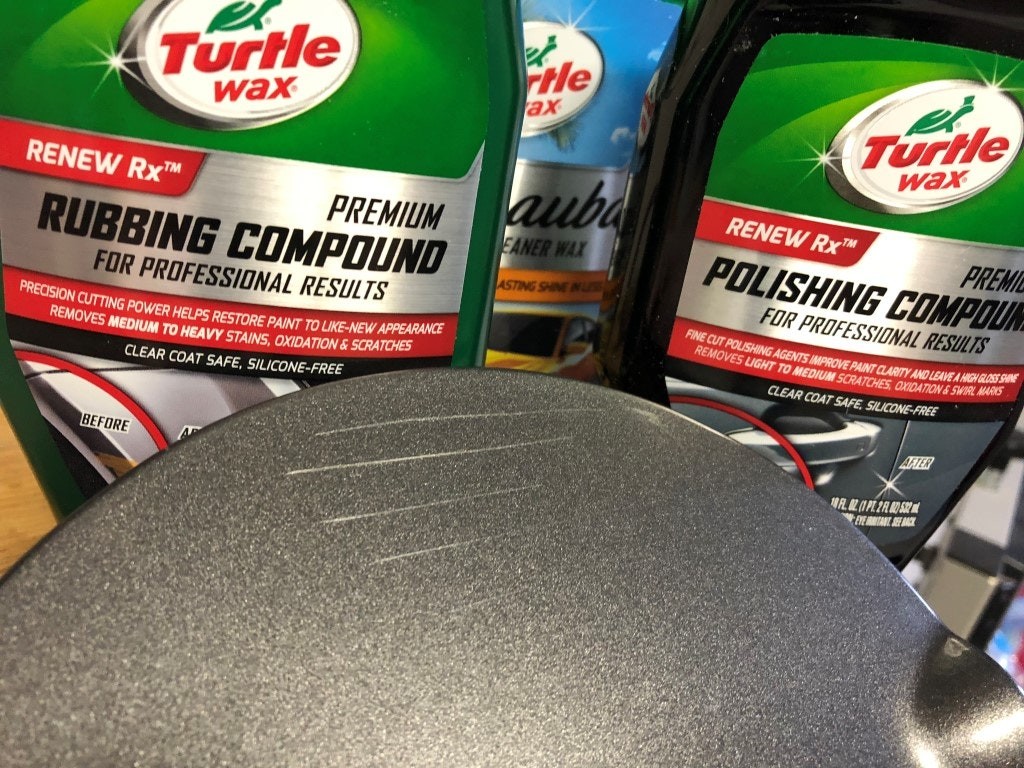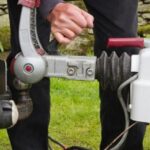Minor car scuffs are an unfortunate reality for vehicle owners. Whether it’s a brush against a bush, a stray shopping cart, or a tight parking spot mishap, these blemishes can detract from your car’s appearance. Fortunately, repairing minor scuffs is often a straightforward DIY task that can save you time and money compared to professional body shop repairs. This guide will walk you through effective methods to tackle those annoying surface scratches and restore your car’s shine.
Understanding Minor Car Scuffs
Before diving into repair methods, it’s crucial to understand what constitutes a minor car scuff. Typically, these are superficial scratches that primarily affect the clear coat layer of your car’s paint. The clear coat is the outermost layer, providing gloss and protection to the color coat beneath. Minor scuffs are usually noticeable as light scratches or swirl marks that you can often feel with your fingernail, but they don’t penetrate deeply into the color coat or primer.
Differentiating minor scuffs from deeper scratches is key. If the scratch is deep enough to expose the color coat or even the metal underneath, or if it remains visible even when wet, it might require more extensive repair methods like sanding and repainting, potentially best left to professionals. However, for the majority of surface-level scuffs, DIY repair is entirely achievable.
DIY Methods for Minor Scuff Repair
Several effective DIY methods can address minor car scuffs, ranging from simple polishing to light abrasion. The best approach depends on the severity of the scuff and your comfort level with DIY car care.
Method 1: Using Polishing Compound for Light Scuffs
For the lightest surface scuffs and swirl marks, a polishing compound is often sufficient. Polishing compounds contain mild abrasives that gently remove a thin layer of clear coat, leveling out the scratch and restoring shine.
Steps:
- Clean the Area: Thoroughly wash and dry the scuffed area and the surrounding paint. This removes dirt and debris that could further scratch the surface during polishing.
- Apply Polishing Compound: Apply a small amount of polishing compound to a clean microfiber cloth.
- Buff the Scuff: Using circular motions and moderate pressure, rub the polishing compound onto the scuffed area. Work in a small area at a time.
- Wipe Away Residue: After buffing for a few minutes, wipe away the compound residue with a clean microfiber cloth.
- Inspect and Repeat: Check if the scuff has been removed or significantly reduced. If necessary, repeat steps 2-4. For very light scuffs, products like Turtle Wax Rubbing Compound, Polishing Compound, and Scratch & Swirl Remover can be effective when applied by hand.
Image alt text: Turtle Wax scratch repair kit products including rubbing compound, polishing compound, scratch and swirl remover, and carnauba liquid wax, suitable for minor car scuff repair.
- Apply Wax or Sealant: After polishing, protect the repaired area with a coat of car wax or sealant to restore shine and protect the clear coat.
While hand application of polishing compounds is effective for very minor scuffs, it may require some elbow grease and may not be sufficient for slightly more noticeable scratches.
Method 2: Utilizing a Machine Polisher for Enhanced Results
For slightly more prominent minor scuffs, or if you prefer a more efficient approach, a machine polisher can significantly enhance the effectiveness of polishing compounds. Machine polishers provide consistent pressure and motion, leading to more even and effective scratch removal.
Steps:
- Prepare the Area: As with hand polishing, start by thoroughly cleaning and drying the scuffed area.
- Apply Polishing Compound to Pad: Attach a polishing pad to your machine polisher and apply a small amount of polishing compound to the pad.
- Machine Polish the Scuff: Using a machine polisher at a low to medium speed, gently polish the scuffed area. Keep the polisher moving and avoid applying too much pressure in one spot. Overlap each pass to ensure even coverage.
- Wipe and Inspect: After polishing, wipe away the compound residue and inspect the results.
- Repeat if Needed: If the scuff is still visible, repeat polishing. For enhanced results, consider using systems like the Meguiar’s DA Power System, which attaches to a standard drill and provides orbital polishing motion for more effective scratch removal.
Image alt text: Car paint surface after polishing with Meguiar’s machine-based tools, showing significant improvement in minor scratch removal and restored paint clarity.
- Protect with Wax or Sealant: Once satisfied with the scratch removal, apply car wax or sealant to protect the polished area and enhance shine.
Machine polishing is generally more effective than hand polishing for removing minor scuffs and can save time and effort, especially for larger areas or more stubborn blemishes.
Method 3: Light Sanding for Moderate Minor Scuffs
In cases where minor scuffs are slightly deeper and polishing alone isn’t fully effective, light sanding may be necessary. This method involves carefully removing a minimal layer of clear coat using very fine-grit sandpaper, followed by polishing to restore shine. Caution is advised when sanding your car’s paint, and it should only be attempted for moderate minor scuffs where polishing has proven insufficient.
Steps:
- Clean and Assess: Thoroughly clean the scuffed area and assess the depth of the scratch. Light sanding is only recommended for moderate minor scuffs still within the clear coat layer.
- Wet Sand the Scuff: Use very fine-grit sandpaper (e.g., 3000 grit or higher) specifically designed for automotive paint repair. Wet the sandpaper and the scuffed area with water or a specialized lubricant. Gently sand the scuff in straight, overlapping strokes. Apply very light pressure and sand sparingly.
- Buff with Rubbing Compound: After sanding, the area will appear hazy or matte. Use a rubbing compound with a polishing pad (hand or machine) to buff out the sanding marks. Rubbing compounds are more abrasive than polishing compounds and are designed to remove sanding scratches.
- Polish to Restore Shine: Follow up with a polishing compound and a polishing pad to refine the finish and restore the clear coat’s gloss.
- Wax or Seal: Protect the repaired area with car wax or sealant to enhance shine and protect the paint. Systems like the 3M Trizact Precision Scratch Kit provide a comprehensive solution including sandpaper, rubbing compound, and polish for this type of repair.
Image alt text: Car panel section after using the 3M Trizact Precision Scratch Kit, showing visible improvement in reducing moderate car scuffs but with some deeper scratches still slightly noticeable.
Light sanding should be approached cautiously and is generally recommended for those with some DIY car care experience. If you are unsure about sanding, start with polishing methods first or consult a professional.
Choosing the Right Method and Products
Selecting the appropriate method for repairing minor car scuffs depends on the scratch severity and your comfort level. For the lightest surface blemishes, polishing compound alone is often sufficient. For slightly more noticeable scuffs, machine polishing enhances results. Light sanding should be reserved for moderate minor scuffs where polishing is not fully effective and requires careful execution.
When choosing products, opt for reputable brands like Meguiar’s, Turtle Wax, and 3M, which offer a range of polishing compounds, scratch removers, and kits designed for DIY car scratch repair. Always read product instructions carefully and test in an inconspicuous area first to ensure compatibility with your car’s paint.
Conclusion
Repairing minor car scuffs at home is a rewarding way to maintain your vehicle’s appearance and prevent minor blemishes from becoming larger issues. By understanding the nature of minor scuffs and utilizing the appropriate DIY methods – from simple polishing to light sanding – you can effectively restore your car’s finish and keep it looking its best. Remember to start with the least aggressive method and progressively increase abrasion only if necessary, always prioritizing caution and careful execution.


